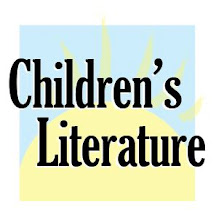Because gardening is one of those activities that can be done at nearly any age—and in nearly every location—it is a perfect way to expose children to the joy of growing their own flowers and food. There are so many different and creative ways to grow a little, or a lot, or simply learn how to identify basic items found in a garden. The highlighted selections below are recently published titles about gardening, and of course, many more titles can be found when you search the CLCD database.
Full feature: http://www.childrenslit.com/childrenslit/th_garden.html
For more information and ideas for gardening with kids visit:
http://inkrethink.blogspot.com/2009/04/10-reasons-why-kids-need-garden.html
http://tlc.howstuffworks.com/family/garden-activities-for-kids.htm
http://www.organicgardening.com/learn-and-grow/gardening-kids
The Imaginary Garden
Andrew Larsen
Illustrated by Irene Luxbacher
Theo loves her Poppa's garden, and is concerned when he moves to an apartment and has to leave it. Since Poppa says it will be too windy on his balcony for real flowers, Theo suggests an imaginary garden. When spring arrives, Poppa puts a big blank canvas on the balcony. With paint they "build" a stone wall and create soil. Poppa paints crocuses and scilla coming up, and adds a visiting robin. When Poppa goes on holiday, he leaves Theo in charge. She adds blossoms in many colors and eagerly awaits his return. This delightful imaginative story combines sketchy black ink drawings with particularly colorful multimedia collages for illustrations. The decorative iron fence on the balcony makes a fine contrast for the great canvas that becomes the garden. There is a logic to the way it grows, with paints added in time for the crocuses and then tulip bulbs, while vines cover the stone, for a sense of magic to the colorful creation. The love between Theo and her grandfather is evident. If only a real garden were as easy to establish and flood with blooms as this one! 2009, Kids Can Press, $16.95. Ages 4 to 8. Reviewer: Ken Marantz and Sylvia Marantz (Children's Literature).
Awards, Honors, Prizes:Amelia Frances Howard-Gibbon Illustrator's Award, 2010 Shortlist Canada
Governor General's Literary Awards, 2009 Finalist Children's Literature (Illustration) Canada
Ruth and Sylvia Schwartz Children's Book Award, 2010 Shortlist Picture Book Canada
ISBN: 9781554532797
Contributor: Emily Griffin






